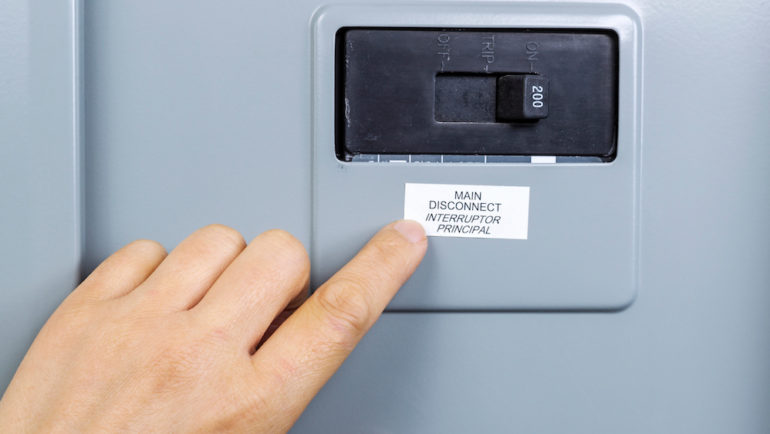You may need to shut off your home’s utilities in the event of a repair, suspected leak or an emergency. Here’s what you need to know about shutting off utilities safely.
Cutting the water supply
The main water valve is adjacent to the water meter, often in the same valve box in the ground. The valve may have a rubber-coated handle. The valve is open when the handle is turned parallel to the supply line. To cut the water, turn the valve perpendicular to the line.
Turning the water back on can cause a pressure leak. To avoid that, before restoring the water, open a few faucets around the house so that air trapped in the plumbing can be pushed out of the lines. Then, gradually open the valve for a minute or two.
Safety tip: Before reaching into the valve box in the ground, look inside to ensure some creature like a snake, rodent, or spider hasn’t made a cozy home inside. It would even be wise to put on a protective glove.
Cutting the electricity
Locate your circuit breaker box. This box is often next to the utility meter on an outside wall but can also be in the home or basement. The main breakers are two large switches at the top, with two columns of smaller sub-breakers below that connect to specific systems such as the air conditioner, water heater, lights and electric sockets.
To cut power to those specific systems, use those smaller switches. To shut down the whole house, shut off each sub-breaker and then the main two breakers.
Reverse this process to restore power. Turn the main breakers on first, then turn the sub-breakers back on one by one. This avoids sending a surge of electricity to all systems at once.
Cutting the gas
Dealing with gas is a different situation that requires extra caution. You should rarely if ever have to cut off gas. A construction project or an emergency such as an earthquake are the only exceptions. It is best to call a plumber or the gas company to shut off the gas. If you must do so yourself, always notify the gas company to send a technician to restore service and check for leaks.
The cut-off to the gas supply is typically on a pipe rising from the ground and leading to the meter. The valve has a rectangular tab about a half-inch thick by one-and-a-half inches wide. Less frequently, there may be a ball valve with a rubber-coated handle. When the valve handle is in line with the supply pipe, the valve is open and gas flows. Turning it perpendicular to the line cuts the gas.
If you smell gas in your home, leave the house immediately and call the gas company. Do not attempt to cut the gas off yourself. Leave the door open to vent some of the gas buildup. Do not turn on or off any light switches, which could ignite the gas.
Related – Circuit Breaker Basics


